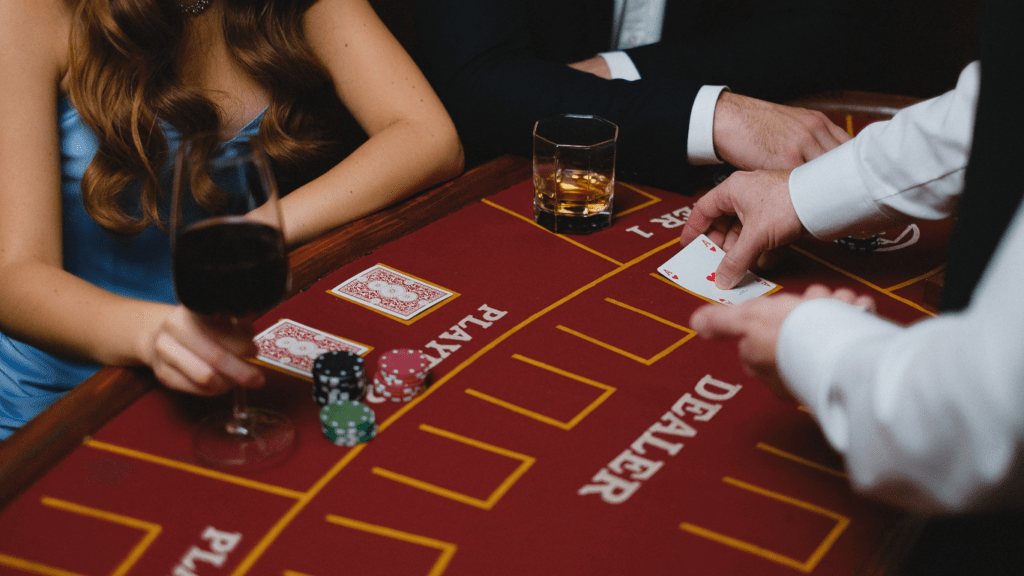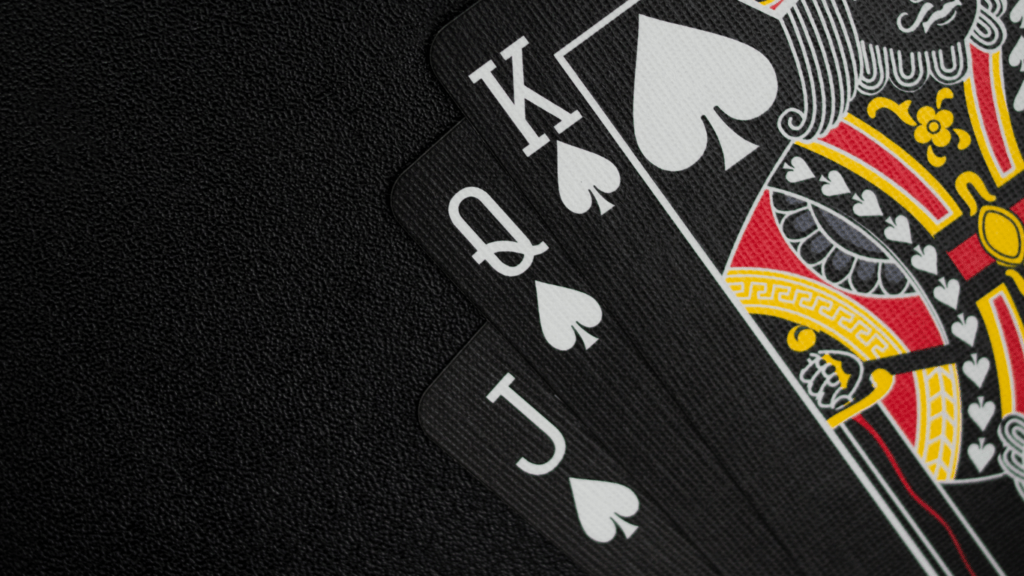Understanding the Basics of Blackjack
Blackjack is one of the most popular casino games, offering a blend of strategy and chance. By understanding its basics, you’ll be better equipped to face the dealer confidently.
Objective of the Game
The primary goal is to beat the dealer’s hand without exceeding 21. Achieving a higher hand value than the dealer or ensuring the dealer busts is essential. A natural blackjack, which consists of an Ace and a 10-point card, offers the highest payout.
Basic Rules and Terminology
Players are dealt two cards, and the dealer also receives two—one face-up and one face-down. You decide whether to hit (take another card), stand (end your turn), double down (double your bet and take one more card), or split (if you have a pair, you can split them into two hands). The term “bust” means your hand’s total exceeds 21, resulting in an automatic loss.
Card Values and Scoring
Cards 2 through 10 are worth their face value. Face cards (King, Queen, Jack) each count as 10 points. Aces are unique, valued at either 1 or 11, depending on which is more favorable for your hand. For instance, a hand with an Ace and a 9 could be either 20 or 10, giving you flexibility in your strategy.
Key Strategies for Beginners

Implementing key strategies helps beginners enhance their blackjack gameplay and make more informed decisions.
Basic Strategy Chart
Using a basic strategy chart optimizes decision-making based on the player’s hand and the dealer’s visible card. The chart details the best statistical moves to minimize the house edge. For example, it indicates when to hit or stand based on specific card combinations. This tool offers critical insights, especially for beginners unfamiliar with all possible scenarios.
When to Hit, Stand, Double Down, or Split
Hitting, standing, doubling down, and splitting are fundamental actions in blackjack. Knowing when to use each action improves winning odds.
- Hit: Drawing another card when the hand total is low. Example: Holding a total of 8, it’s advisable to hit.
- Stand: Keeping the current hand total when it’s likely to win. Example: A total of 17 or higher usually means standing.
- Double Down: Doubling the initial bet for one extra card. Example: Holding a total of 11 against a dealer’s lower card.
- Split: Dividing a pair into two separate hands, doubling the bet. Example: Splitting a pair of 8s increases the chance of getting better hands.
Common Mistakes to Avoid
Avoid common mistakes novice players make to conserve chips and improve performance.
- Ignoring Basic Strategy: Not following a basic strategy chart often leads to poor decisions.
- Splitting Tens: Splitting a pair of tens is generally a bad move. Keeping the hand maximizes winning potential.
- Over-relying on Hunches: Making decisions based on gut feelings rather than statistics increases losses.
- Failing to Manage Bankroll: Not setting a budget can lead to significant losses and less enjoyment of the game.
Understanding and implementing these strategies helps you become more proficient at blackjack and heightens the enjoyment of the game.
Advanced Tips and Techniques
Once you’re comfortable with the basics of blackjack, it’s time to explore advanced strategies that can level up your game. These techniques require practice and a deeper understanding of the game.
Card Counting Basics
Card counting is a technique to keep track of the ratio of high to low cards remaining in the deck. I use this strategy to estimate whether the next hand is likely to give an advantage to the player or the dealer. When there are more high cards like 10s and Aces left, the odds favor the player.
I often start with the Hi-Lo system, where I assign a value of +1 to cards 2-6, 0 to cards 7-9, and -1 to 10s, face cards, and Aces. By keeping a running count, I adjust my bets accordingly. Increasing bets during a positive count enhances my chances of winning.
Bankroll Management
Managing bankroll efficiently is crucial for long-term success in blackjack. I set a loss limit and a win goal before starting a session. For example, I might decide to stop playing if I lose $100 or win $200. This strategy helps in avoiding chasing losses and succumbing to emotions.
Allocating a specific portion of my total bankroll for each session ensures I don’t exhaust funds too quickly. I usually bet 1-2% of my total bankroll per hand. This conservative approach preserves my funds and allows me to endure losing streaks without significant setbacks.
Recognizing Dealer’s Face-Up Card Patterns
Observing the dealer’s face-up card can provide crucial information for decision-making. If the dealer shows a 2-6, they are more likely to bust, so I usually stand on a lower total. Conversely, if the dealer reveals a 7-ace, I take a more aggressive approach to improve my hand.
Taking mental notes of how dealers handle different face-up cards over multiple games can help me recognize patterns. For example, a dealer consistently drawing low cards with a 6 up may suggest a higher chance of busting. Adapting my strategy based on these observations enhances my decision-making process.
Incorporating these advanced tactics into my gameplay significantly improves my odds of winning at blackjack. Proper practice and discipline are key to mastering these techniques.
Online vs. In-Person Blackjack
Playing blackjack offers different experiences online and in-person. Each setting has unique aspects that affect gameplay, strategy, and enjoyment.
Playing Blackjack Online
Playing blackjack online provides accessibility and convenience. Online platforms offer various game variations and stakes, catering to all skill levels. Users can play from home, eliminating the need for travel. For example, websites like 888 Casino and Betway provide options ranging from classic blackjack to live dealer games.
Playing Blackjack at a Casino
In-person blackjack at a casino offers an immersive experience. Engaging with dealers and other players adds a social dimension to the game. The atmosphere, sounds, and sights enhance the excitement. Casinos like those in Las Vegas or Atlantic City provide various blackjack tables with differing house rules and minimum bets.
Pros and Cons of Each
Online Blackjack Pros:
- Convenience: Play anytime, anywhere
- Variety: Access to multiple game types
- Speed: Faster gameplay without wait times
Online Blackjack Cons:
- Social Interaction: Lack of face-to-face engagement
- Trust: Concerns about software fairness
In-Person Blackjack Pros:
- Atmosphere: Enhanced casino environment
- Social Aspect: Interaction with dealers and players
- Transparency: Visible shuffling and dealing process
In-Person Blackjack Pros:
- Travel: Need to visit a physical location
- Cost: Potential higher expenses (e.g., travel, drinks)
Both online and in-person blackjack offer unique benefits. Choose the setting that best fits your preferences and needs.
Resource Recommendations for Further Learning
Even with a solid understanding of blackjack basics and strategies, further learning can enhance your skills. Below are some recommended resources:
Books and Guides
Books offer in-depth knowledge and strategies from seasoned experts. Three key books include:
- “Beat the Dealer” by Edward O. Thorp: This classic introduces card counting and other strategies. Thorp explains concepts in a clear, accessible manner.
- “Blackjack Blueprint” by Rick Blaine: Blaine covers advanced strategies and blackjack variations. He provides practical advice for both beginners and experienced players.
- “Professional Blackjack” by Stanford Wong: Wong delves into techniques like card counting and betting strategies. His mathematical approach helps readers understand the game deeply.
Online Courses and Tutorials
Online courses and tutorials provide structured learning with visual aids:
- Blackjack Apprenticeship: This platform offers comprehensive courses on card counting. It includes video lessons, training drills, and community support.
- Udemy’s “Blackjack Essentials”: This course covers rules, basic strategy, and advanced techniques. It’s ideal for beginners wanting a strong foundation.
- YouTube Channels: Several YouTube channels, such as “Color Up” and “Blackjack Academy,” offer free tutorials. These channels focus on basic rules, strategies, and live gameplay examples.
Mobile Apps for Practice
Mobile apps provide a convenient way to practice and refine your skills:
- Blackjack 21: Blackjackist: This app offers realistic gameplay against other players. It includes tutorials and strategy guides.
- Blackjack Strategy Practice: This app focuses on practicing basic strategy decisions. Users can simulate various scenarios to improve decision-making.
- Card Counter: This app helps players learn and practice card counting techniques. It features interactive drills to enhance speed and accuracy.
Utilizing these resources can significantly improve your understanding and performance in blackjack.

